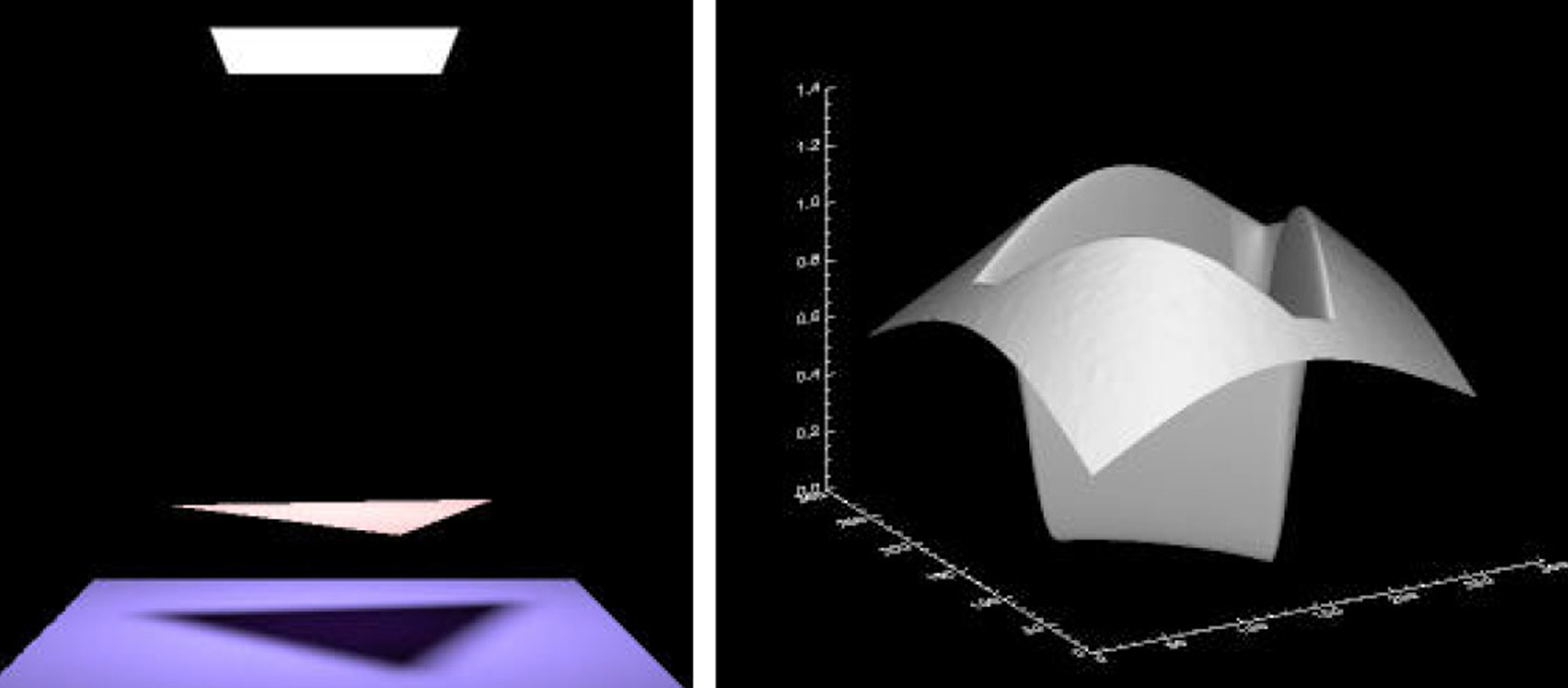“Radiosity algorithms using higher order finite element methods” by Troutman and Max
Conference:
Type(s):
Title:
- Radiosity algorithms using higher order finite element methods
Presenter(s)/Author(s):
Abstract:
Many of the current radiosity algorithms create a piecewise constant approximation to the actual radiosity. Through interpolation
and extrapolation, a continuous solution is obtained. An accurate
solution is found by increasing the number of patches which describe
the scene. This has the effect of increasing the computation time as
well as the memory requirements. By using techniques found in the
finite element method, we can incorporate an interpolation function
directly into our form factor computation. We can then use less elements to achieve a more accurate solution. Two algorithms, derived
from the finite element method, are described and analyzed
References:
1. Baum, Daniel R., Holly E. Rushmeier, James M. Winget, Improving Radiosity Solutions Through the Use of Analytically Determined Form-Factors, Computer Graphics 23(3), July 1989
2. Burnett, David S., Finite Element Analysis, Addison Wesley Publishing Co., Reading, Massachusetts, May 1988
3. Cohen, Michael F., Donald E Greenberg, The Hemicube: A Radiosity Solution for Complex Environments, Computer Graphics 19(3), July 1985
4. Farin, Gerald, Curves and Sulfaces for Computer Aided Geometric Design, Academic Press, 1990.
5. Goral, Cindy M., Kenneth E. Torrance, Donald E Greenberg, Bennett Battaile, Modeling the Interaction of Light Between Diffuse Sulfaces, Computer Graphics 18(3), July 1984
6. Hallquist, John O., MAZE – An Input Generator for DYNA2D and NIKE2D, LLNL Tech. Report, UCID-19029, Rev. 2.
7. Heckbert, Paul S., Generic Convex Polygon Scan Conversion and Clipping, Graphics Gems, Academic Press, 1990
8. Heckbert, Paul S., James M. Winget, Finite Element Methods for Global Illumination,U.C. Berkeley, Jan. 1991
9. Heckbert, Paul S.,Discontinuity Meshing for Radiosity, Third Eurographics Workshop on Photorealism, Consolidation Express, Bristol, England, May 1992
10. Lischinski, Dani, Filippo Tampieri, Donald E Greenberg, Combining Hierarchical Radiosity and Discontinuity Meshing, Computer Graphics, Annual Conf. Series, Aug. 1993
11. Max, Nelson L., Michael J. Allison, Linear Radiosity Approximations using Vertex-to-Vertex Form Factors, Graphics Gems III, Academic Press, 1992
12. Salesin, David, Dani Lischinski, Tony DeRose, Reconstructing Illumination Functions with Selected Discontinuities, Third Eurographics Workshop on Photorealism, Consolidation Express, Bristol, England, May 1992
13. Siegel, Robert, John R. Howell, Thermal Radiation Heat Transfer, McGraw-Hill Book Co., N.Y., 1972
14. Troutman, Roy, Parallel Radiosity Algorithms using Higher Order Finite Elements, Master’s thesis, U.C. Davis, Dec. 1992
15. Wallace, John R., Kells A. Elmquist, Eric A. Haines, A Ray Tracing Algorithm For Progressive Radiosity, Computer Graphics 23(3), July 1989
16. Zats, Harold R., Galerkin Radios#y: Higher Order Global Illumination, Computer Graphics, Annual Conf. Series, Aug. 1993





